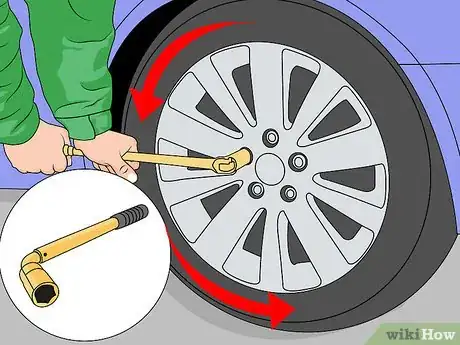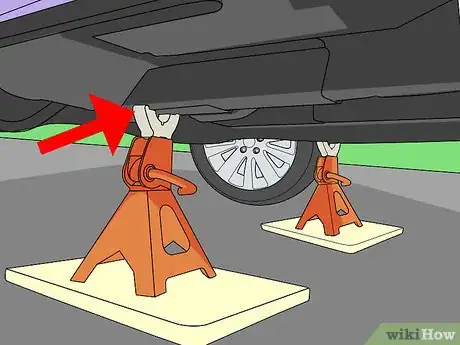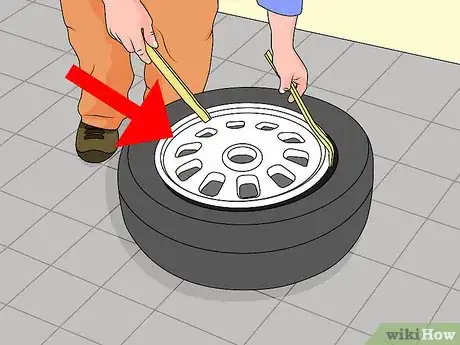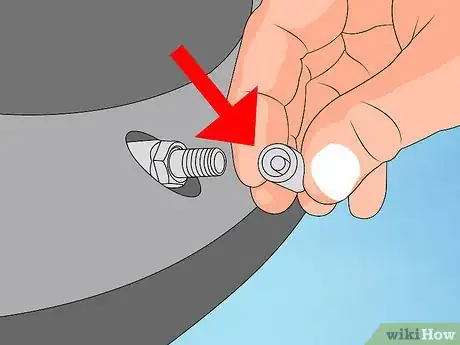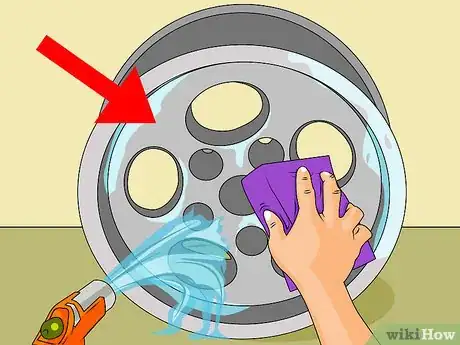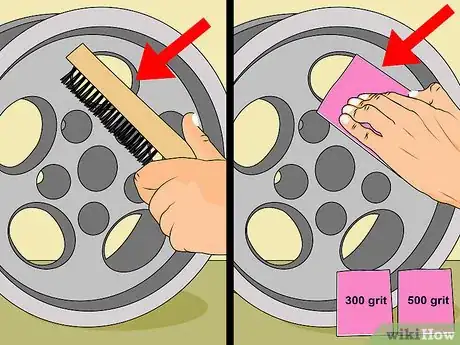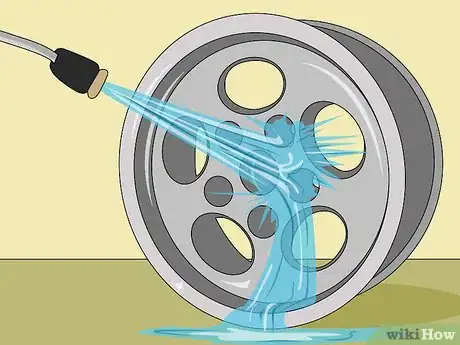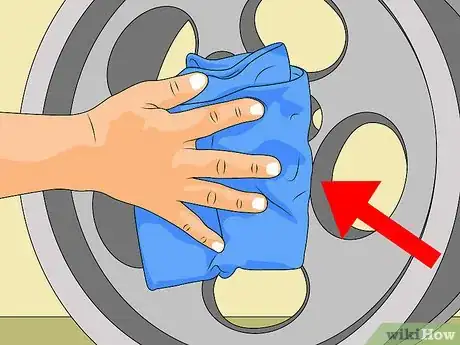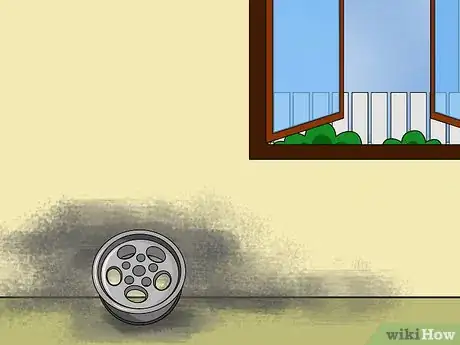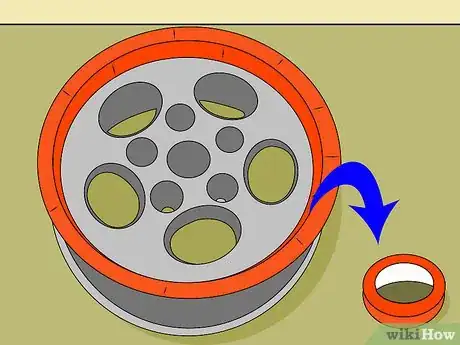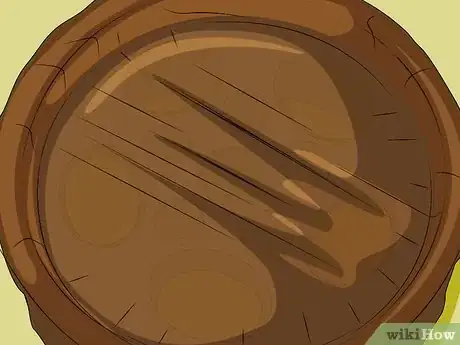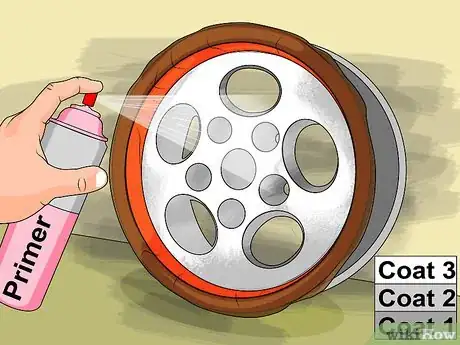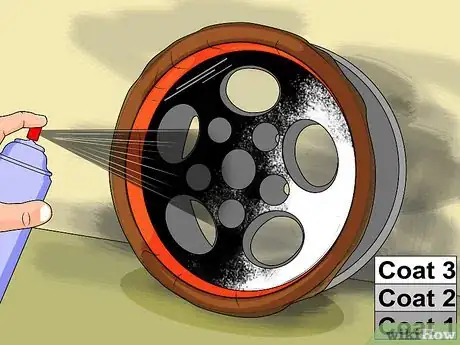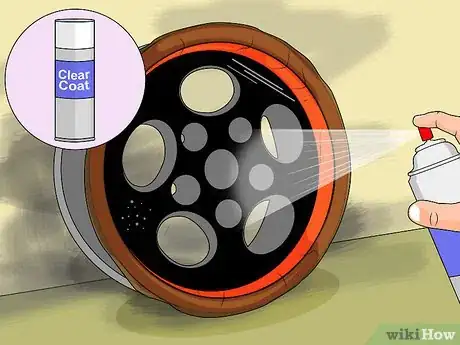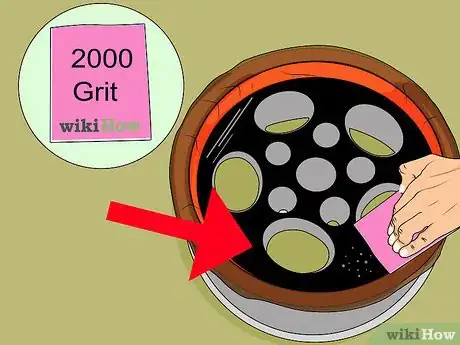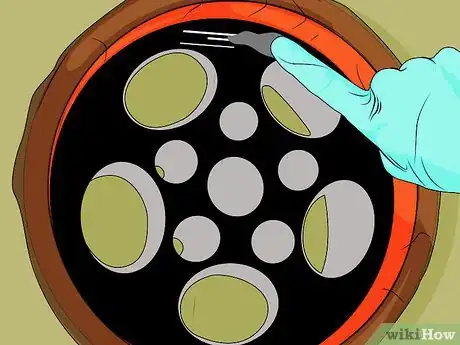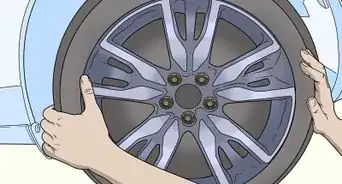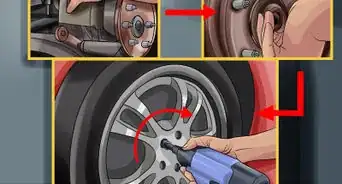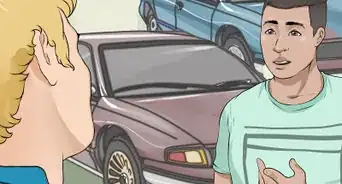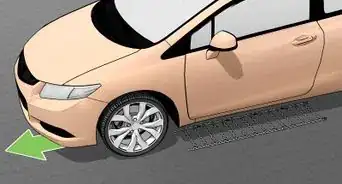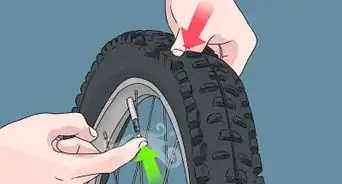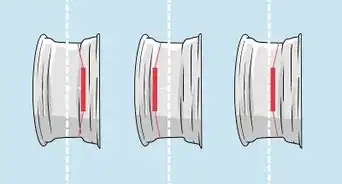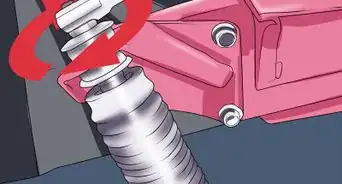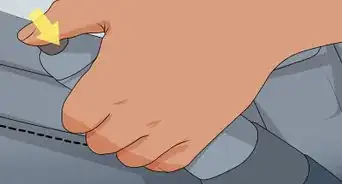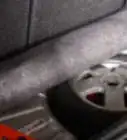This article was co-authored by Howard Fleischmann. Howard Fleischmann is an Automotive Tire and Repair Specialist and the CEO of Community Tire Pros & Auto Repair, with ten locations throughout Phoenix, Glendale, Yuma, and Casa Grande, Arizona. Howard specializes in full-service auto repair and tire replacement and care for domestic/imported vehicles and large trucks. Howard’s dedication to Community Tire Pros & Auto Repair has earned their team multiple awards and features including the 2021 Phoenix Magazine AZ State 48 “Best of the Best!”, the 2020 “Best of Phoenix” in Auto Repair, the 2013 Master SBD award, the 2013 National “Top Shop” award by Tire Review, the 2012 Diversity Champions Phx Business Journal, the 2009 BBB Ethics award, the 2008 Phx Chamber of Commerce Impact Award -” Small Business of the Year”, and the 2008 ASU Spirit of Enterprise award. Howard is often referred to as “The Car Guy” for local TV stations and is a regular on TV’s Channel 3 Sunday, Good Morning Arizona monthly.
This article has been viewed 354,889 times.
If you are looking to add style to your car, or if your old car needs to be revitalized, painting your wheels could be the magic touch you need. You can certainly have this done in a shop, but it is also possible to do it yourself. If you are up for a weekend project and are comfortable with the idea of painting, this job is a perfect DIY project for you.
Steps
Removing Your Wheels
-
1Use a lug wrench or an impact to loosen the lug nuts. This is the safest way to loosen your lugs. While the car is still on the ground, it puts pressure on the wheels. This holds the wheels in place and allows you to loosen the lugs without the wheel spinning.
-
2Jack up the car. Look in your service manual for recommended jacking points. This will help avoid any unnecessary damage to the vehicle. Place the jack under the jacking points and jack up the car.Advertisement
-
3Use jack stands to stabilize the car. Although you need a jack to get the car in the air, a car resting on a jack is not safe. Again, consult a service manual for jacking points and slide the jack stands under those points. Lower the car with the jack and rest the car on the jack stands.
- If you are lifting the front or back end there should be one on each side of the car. If you are lifting the whole car, there should be two on each side near each corner.
-
4Remove the lug nuts. Now that the car is in the air and well supported, you can remove your lug nuts. They should be loose enough to remove by hand. If not, use a lug wrench or impact to get them off.
-
5Remove the wheel from the wheel base. Once the lugs are removed, you can simply pull the wheel away from the car. Follow this same procedure for each of the four wheels. Move the wheels to a suitable workspace.
-
6Have the tires removed from your wheels. It's very difficult to do this safely without specialized equipment, so it's best to have this done by a mechanic or tire shop.
- While not strictly necessary, removing your tires reduces the time taken to mask off the rim, and eliminates the chance of overspray on your tires. Removing the tires will also help ensure that you can paint all the way to the edge of the rim with no interference.
-
7Remove your valve stem. This step, like removing the tires, is optional. Removing the valve stem from your rims allows you to paint without masking it off. It also eliminates the difficulty of trying to paint at different angles to avoid missing parts of the rim that may be slightly blocked by the valve stem. This allows a more natural spraying motion and can result in a better overall paint job.
Sanding and Cleaning Your Wheels
-
1Clean your wheels with soap and water. This first step will remove most dirt and grime from your wheels. This will allow you to recognize any dents, chips, or rust on your wheels. It will also make sanding easier and more efficient.[1]
-
2Clean your wheels with a wax and grease remover. A wax and grease remover is typically just a nonpolar solvent like mineral spirits (unlike water, which is a polar solvent). This will dissolve things that water will not, such as oils. It’s a good way to clean what your soapy water may have missed.
-
3Sand your wheels. At the very least, you will need a wire brush to remove all rust. Ideally, you would sandblast your wheels to remove rust and any old paint or stuck-on debris. This will give you the best starting surface. Next, sand the entire wheel with 300 grit sandpaper and then 500 grit sandpaper. This will remove any coarse scratches and leave only a smooth surface with very fine scratches that the paint can adhere to and cover.[2]
- When you are finished sanding, you should be able to run your fingers over the wheel and feel a smooth even surface. There should be no rough patches or pits in the wheel.
-
4Spray the wheels with water. You want to spray off any debris from sanding. Remove as much dust as you possibly can. This will help ensure a clean paint job. If you do not have a water hose, you can dump water over the wheels with a bucket.
-
5Dry the wheels. Use compressed air to get to any cracks or crevices that you cannot reach. Make sure that all water (and the dust in it) is wiped away. Again, we want the wheels absolutely clean for priming and painting. You can also dry with a chamois cloth, but be sure to leave no water on the surface at all.
Masking and Preparing Your Wheels for Paint
-
1Choose a place to paint. The ideal location will be as dust-free as possible. You should also consider spraying down the floor and/or walls to reduce the chance of stirring up dust. Good ventilation is a must. It helps remove dust and other contaminants and also removes the excess paint and thinner from the room.
-
2Wear protective gear. This will protect yourself from toxic materials in the paint, as well as protect your paint job from anything falling off of your body. Having your head and body covered minimizes the risk of a hair or piece of lint falling onto the paint surface. At the very least, a mask/respirator is a must for safety.
- Paints and paint thinners (also known as reducers) contain volatile organic compounds (VOCs). These VOCs are flammable and toxic. They are dangerous to inhale and are also absorbed through the skin and eyes.[3]
-
3Put tape around the perimeter of your paint surface. The tape should outline the part of the rim you wish to paint without touching it. The part of the wheel that you want to paint should not have any tape on it. This can be a slow and tedious process depending on the design of your wheel and whether or not you opted to remove your tires and valve stem.[4]
-
4Cover the entire wheel in plastic or paper wrap. This will be the primary protection from overspray. By blocking the excess paint from landing on other surfaces of the wheel, you save yourself a lot of time trying to clean it off later. Any overspray that does end up in unwanted places will have to be carefully removed with lubricant and a clay bar.[5]
-
5Cut the plastic with a razor. Trim out the center of the plastic. This will expose the section of the wheel you wish to paint.[6] Tape the outside of the circle you made (the cut edges of the plastic) and down to the first layer of tape that you laid. Tape the rest of the plastic edges down as well. This will seal off any entrance for overspray to get on the rest of your wheel.
Priming and Painting Your Wheels
-
1Wipe the paint surface down with wax and grease remover. You need a final wipe to remove any excess dirt or dust from the wheels. The wax and grease remover also removes any oils left from your hands or skin while working with the wheel. Use a clean paper towel to wipe the surface dry instead of letting the cleaner evaporate.
-
2Prime the wheels. The primer provides the ideal surface for your paint to adhere to and helps in rust prevention. It also provides an even color across the paint surface and allows the paint to look the same across your wheel. You will need to spray on two coats of primer. Read the instructions on your primer and wait the recommended amount of time in between coats. This will help prevent running.[7] [8]
- You will need a self-etching primer at the very least. This will protect the metal from rusting. Depending on the quality of paint job you want, there are also primers that are specifically formulated to go with certain paints. Talk to your parts/paint dealer about which primer you should use.
-
3Inspect your wheels. After priming you will be able to see any blemishes that you may have missed when getting the wheel to this point. If you see any, you will have to sand down the primer, fix the imperfection, and prime again. This is your last opportunity to make your wheels perfect before the paint goes on.[9]
- Paint goes on in very thin coats. While some very minor imperfections may be overlooked, paint does not hide imperfections well.
-
4Paint your wheels. As with the primer, the paint will need to be applied in several (usually three) even coats. You should allow the paint to sit for the recommended time before applying the next coat. Spray back and forth across the paint surface at an even pace. Do not get too close to the surface or move too slowly or else you’ll run your paint. If you move too quickly, you won’t get good coverage.
-
5Spray your clear coat. This is only necessary if you are using a base coat/clear coat paint. If your paint is single-stage, you can skip this step. Clear coat will be applied the same way as paint and primer - three even coats with time in between. Allow the paint job to sit for 24 hours before buffing or reinstalling your wheels.[10]
- Be warned that clear coat runs easier than base coat or primer.
Buffing and Polishing Your Wheels
-
1Sand any dirt spots. Dirt spots look like dust in your paint job (which is exactly what they are). Sand them out with a very mild sandpaper; about 2000 grit should do. If you want to make the buffing process easier, you can go back over these sand scratches with an even finer 3000 grit sandpaper.
-
2Buff the scratches. It is not necessary to use the buffing compound on the entire paint job (unless it looks dull). You do need to use the compound, which is usually the first step in a multi-step buffing system, on any areas that you sanded. Buff lightly until you cannot see the sandpaper scratches anymore.[11]
- Be aware that moving the buffer too slowly, getting it caught in a corner, or buffing at too high a speed can result in burning or peeling off the paint.
- Clean off excess buffing solution with a mixture of water and isopropyl alcohol.
-
3
-
4Polish your wheel. The polish will often come as a second step in a buffing system. Sometimes there is even a third step that promotes shine even further. Apply the polish with a buffer on low speeds with a soft foam pad and then wipe it away with a clean microfiber cloth.
- Do not use traditional wax or silicon on fresh paint. If you seal the paint it will not properly vent and this will cause bubbling and or cloudiness in your paint job.[14]
Community Q&A
-
QuestionCan you paint chrome wheels?
 Community AnswerWhen it comes to wheels, chrome is only a finish that is applied to the wheel. You will sand most or all of the chrome finish off in the process of preparing the wheel for paint, but yes, you can paint a chrome wheel.
Community AnswerWhen it comes to wheels, chrome is only a finish that is applied to the wheel. You will sand most or all of the chrome finish off in the process of preparing the wheel for paint, but yes, you can paint a chrome wheel. -
QuestionWill 2000 grit be safe and not scratch the paint?
 Masroor JehangiriCommunity AnswerThe scratches will not be visible after you put the paint and the clear coat on because the clear coat fills in the gaps. For a more detailed process, check out the YouTube channel called Chrisfix.
Masroor JehangiriCommunity AnswerThe scratches will not be visible after you put the paint and the clear coat on because the clear coat fills in the gaps. For a more detailed process, check out the YouTube channel called Chrisfix.
Warnings
- VOCs are very dangerous and should not be inhaled.⧼thumbs_response⧽
- Do not let children, pets, or friends in the paint area with you.⧼thumbs_response⧽
Things You'll Need
-
Removing Your Wheels
- Lug Wrench or Impact
- Jack
- Jack Stands
-
Sanding and Cleaning Your Wheel
- Cloth or Paper Towels
- Degreaser
- Mineral Spirits
- Wire Brush or Sandblaster
-
Masking and Preparing Your Wheels for Paint
- 300, 500, 1000, 2000, 3000 grit sandpaper
- Masking tape (3M tape-Blue)
- Plastic or Paper for masking
-
Priming and Painting Your Wheels
- Primer
- Paint
- Clear Coat
-
Buffing and Polishing Your Wheels
- Buffing Compound
- Polish
- Buffer
References
- ↑ http://www.popularmechanics.com/home/outdoor-projects/how-to/a18882/how-to-paint-your-car-wheels/
- ↑ http://www.enginebasics.com/Misc%20Information/Painting%20Wheels.html
- ↑ http://www.nontoxicprint.com/safespraypainting.htm
- ↑ http://www.enginebasics.com/Misc%20Information/Painting%20Wheels.html
- ↑ http://www.autopia.org/forums/auto-detailing-101-a/32000-remove-overspray-car.html
- ↑ https://www.readersdigest.ca/cars/maintenance/how-refinish-car-wheels/
- ↑ https://www.readersdigest.ca/cars/maintenance/how-refinish-car-wheels/
- ↑ http://www.enginebasics.com/Misc%20Information/Painting%20Wheels.html
- ↑ http://www.enginebasics.com/Misc%20Information/Painting%20Wheels.html
- ↑ https://www.readersdigest.ca/cars/maintenance/how-refinish-car-wheels/
- ↑ http://www.enginebasics.com/Misc%20Information/Painting%20Wheels.html
- ↑ http://www.enginebasics.com/Misc%20Information/Painting%20Wheels.html
- ↑ http://www.autopia.org/forums/auto-detailing-101-a/32000-remove-overspray-car.html
- ↑ http://www.golfmk6.com/forums/showthread.php?t=37368
About This Article
Before you get started, take the wheels off of your car so they're easier to work with. Sand the wheels with 300-grit and 500-grit sandpaper to get rid of any scratches and make the surface smooth for painting. Add at least 1 coat of primer to help the paint stick and prevent rust. You may need to add up to 3 coats of paint to achieve the color you want. For more tips, including how to buff and polish your painted wheels, read on!
